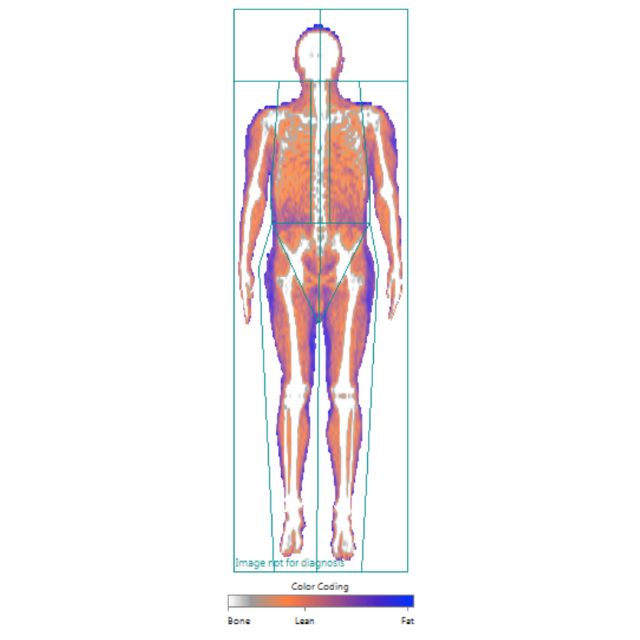There I was, lying perfectly still while the scanner above me slowly made its way from my head down to my feet. I got a DEXA scan yesterday to measure my body fat percentage and see the results of the Slow Carb diet I’ve been following for the past month.
But this story begins in June of 2022 when I got my first DEXA scan out of curiosity. At the time, I weighed 161 lbs (typical for me) and my body fat was at 24.3%.
That was higher than I expected, but I didn’t worry about it. My focus was on other areas at the time, like selling my business.
Fast forward to last month when I decided to get an updated scan. Over the past year I’ve gone to the gym 98 times (mostly lifting weights), consumed less sugar, and reduced alcohol consumption from once or twice per week down to once per quarter.
I expected to see some improvement.
While I added 4.6 pounds of muscle, I also added 2 pounds of fat. Now my body fat percentage was up to 24.6% – that’s not the trend I wanted to see.
So I cracked open my copy of The 4-Hour Body by Tim Ferriss and read every chapter on fat loss.
He recommends the Slow Carb diet, which works like this:
Six days per week you avoid any carbohydrate that is (or can be) white – all bread, rice (including brown), cereal, pasta, sugar, etc. Also, no fruit or dairy. Then once per week on cheat day, you can eat anything you want.
The whole point is to consume plenty of protein, veggies, and legumes.
I’ve been following this diet for the past month along with two suggestions from the book to increase testosterone: I eat four Brazil nuts every morning and take 5,000 IU of liquid Vitamin D.
In the five times I’ve had my testosterone measured going back to 2017, it’s always been between 351 – 398. This is within the normal range for men my age, but if there’s a natural way to increase my testosterone, I’m in.
The Results
6.7 pounds lost
23% body fat (down from 24.6%)
65% testosterone increase
Specifics
First, that testosterone increase is wild and completely unexpected. I went from 355 in June to 586 in July. I’ll be interested to see if this level sustains over time.
Of the weight I lost, 4.2 pounds came from fat and 2.5 pounds came from muscle. Losing muscle isn’t ideal, but from what I’ve read it’s not uncommon. Increasing protein and water consumption should help with that.
The best news on the fat loss side comes from VAT (visceral adipose tissue). This type of fat is located between the organs and is associated with metabolic diseases. You want this to be as low as possible.
I went from 1.93 lbs of VAT down to 1.25 lbs, a 35% reduction.
Why It Works
The two word explanation for why this diet works: calorie restriction. I’ve never counted calories or been on a diet before, but over the past month I’ve really paid attention to what I’ve been eating.
Counting calories isn’t part of the diet. Tim recommends against it – just eat until you feel full. That worked for me. I never felt hungry on this diet.
But out of curiosity, I started using MyFitnessPal over the past two weeks to see what my daily calorie intake looked like. On average, I’m consuming about 1,800 calories per day.
Entering some hypotheticals into the app shows that I was probably consuming about 2,500 – 2,800 calories per day prior to the Slow Carb diet.
It’s hard to know how many calories I burn in a day, but clearly there’s a calorie deficit that’s leading to the weight loss.
There’s also some science around insulinemic response that affects calorie burn rate, but that’s not something I can really explain.
What’s Next
This feels like a great start, but I want to get my body fat below 20% by the end of the year.
I’ve also watched some helpful videos from Andrew Huberman and I’ll continue learning more about this topic, making adjustments to my diet and workout as I go.

